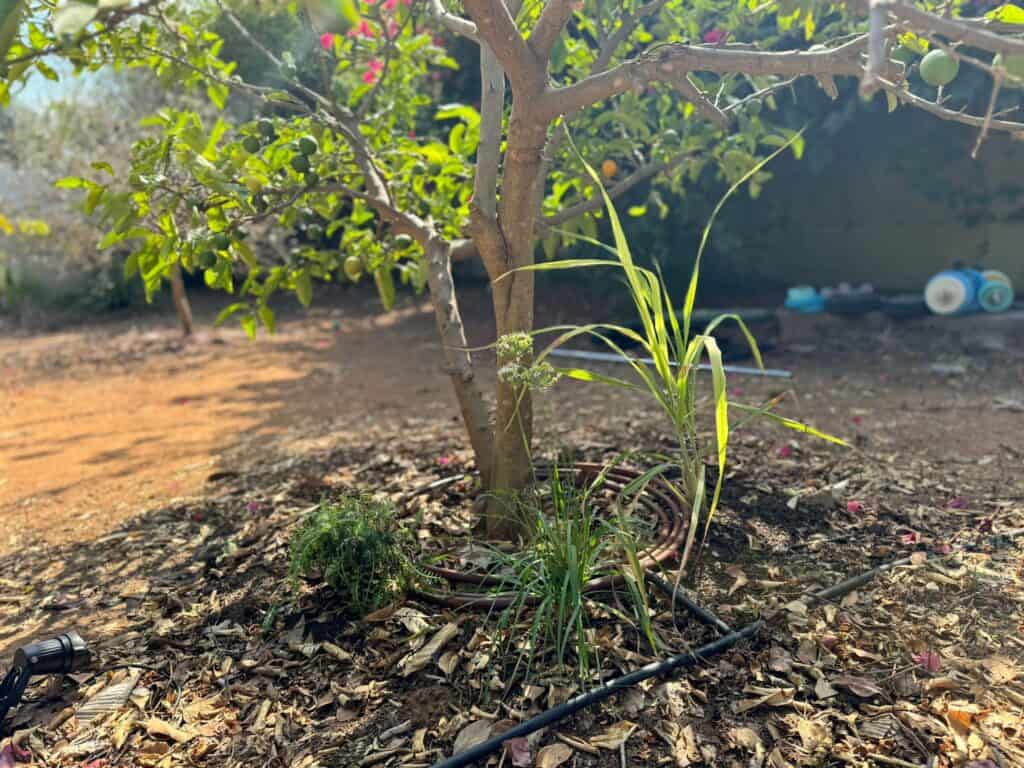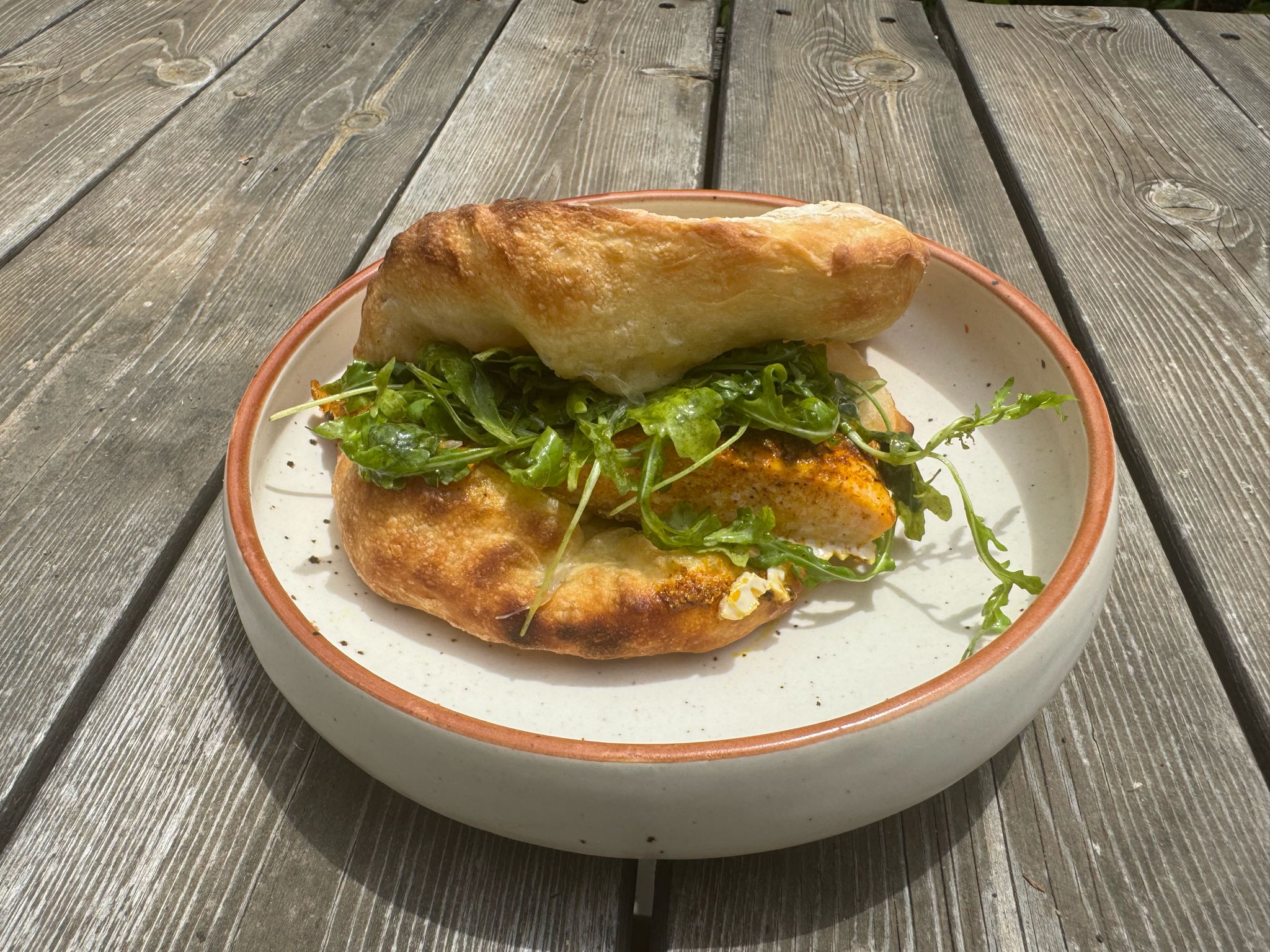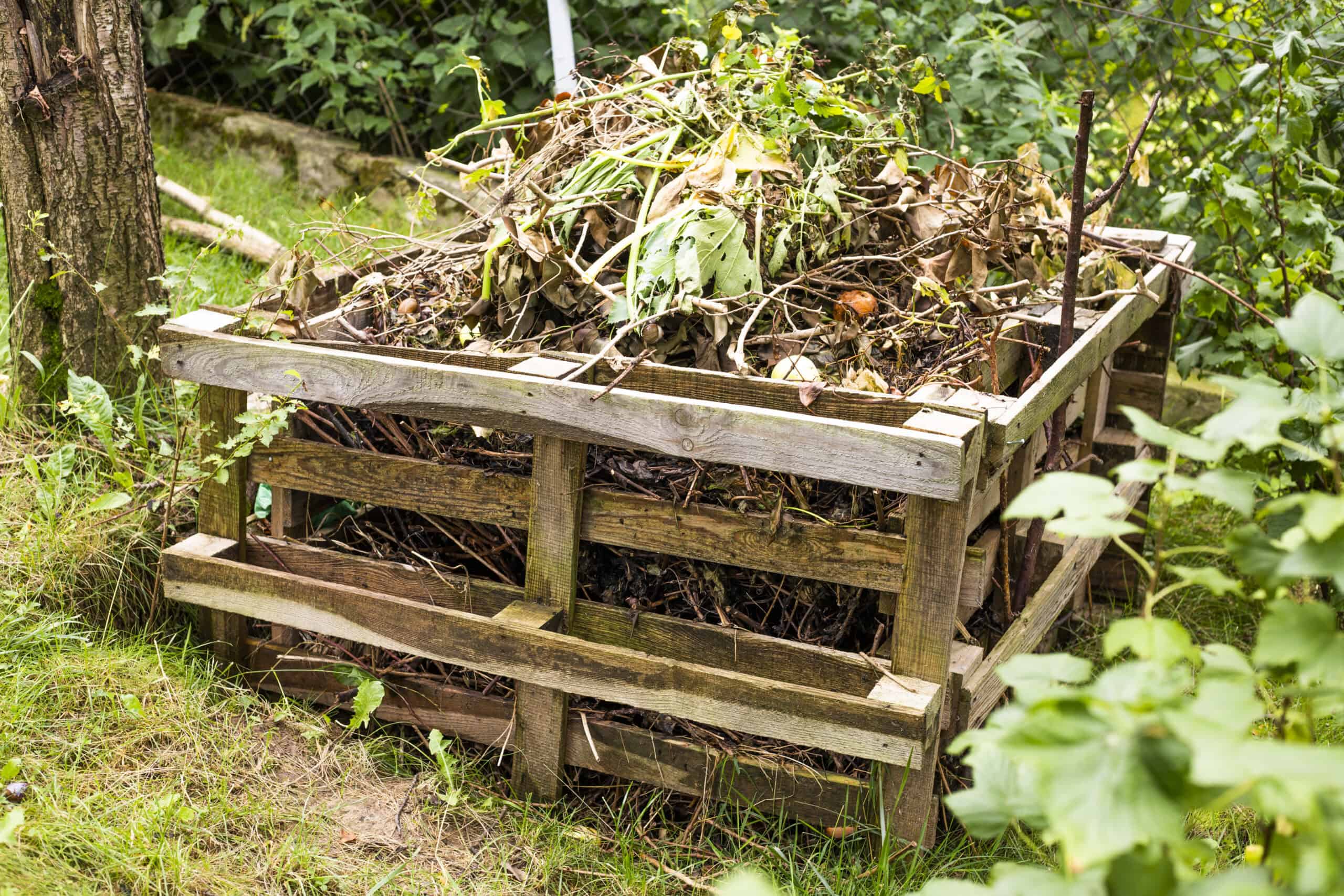How do I set up a successful tree guild in permaculture?
Tree guilds are a fundamental concept in permaculture and regenerative agriculture, where plants, animals, fungi, and beneficial insects work together around a central tree to create a self-sustaining, mutually beneficial ecosystem. Each element in a guild plays a specific role that supports the health of the entire system, enhancing biodiversity, soil fertility, pest control, and overall productivity. This natural grouping of species mimics the relationships found in healthy ecosystems, offering a sustainable solution to traditional agriculture challenges.
In this guide, we’ll take a deeper look at tree guilds and how you can create one, highlighting the important components and benefits of this permaculture technique. If you are on your own permaculture journey make sure to check out Mapping Out Your Year: A Guide to Crop Rotation
What is a Tree Guild?
At its core, a tree guild is designed to work with nature, not against it. By observing natural ecosystems, we can replicate these systems in our own gardens or orchards, fostering healthier plants with fewer inputs like synthetic fertilizers or pesticides. The main concept of a guild is to surround a central tree—typically a fruit or nut tree—with other plants that help support its growth.
The goal is to create a symbiotic relationship, where each plant, insect, and even fungi play a role that strengthens the overall health of the system. This reduces the need for human intervention, such as watering or pest management, as the guild functions as a self-sustaining ecosystem.
Why Tree Guilds Matter for Regenerative Agriculture
Regenerative agriculture is all about improving soil health, biodiversity, and resilience in farming systems. Tree guilds perfectly align with these principles. They:
- Improve Soil Fertility: Dynamic accumulators and nitrogen fixers contribute essential nutrients to the soil, reducing the need for artificial fertilizers.
- Enhance Biodiversity: By creating a layered ecosystem of trees, shrubs, herbs, and ground covers, guilds support a wide variety of species.
- Increase Resilience: Guilds mimic natural ecosystems, which are inherently more resilient to pests, diseases, and extreme weather events than monoculture systems.
- Reduce Inputs: Because the plants in a guild support each other, the need for external inputs like pesticides, herbicides, or synthetic fertilizers is minimized.

Components of a Tree Guild and Their Roles
Creating a successful tree guild involves choosing plants that work together harmoniously. Here are the main components of a tree guild, with examples of plants you can include:
1. The Central Tree
The central tree is the focus of the guild, often a fruit or nut tree. The surrounding plants are chosen to support this tree’s health by providing nutrients, moisture, pest protection, and more. Some common choices for central trees include apple, pear, plum, or peach trees in temperate climates, while avocado, olive, or citrus trees work well in warmer regions.
- Example: In a Mediterranean climate, you might plant an olive or avocado tree as the central focus of the guild.
Choosing the right tree for your region is crucial. Ensure that the tree is compatible with the climate, soil type, and other factors. You may want to consider drought-tolerant species if water conservation is a priority, or trees that thrive in heavy soils if drainage is an issue.
2. Nitrogen Fixers
Nitrogen-fixing plants play a crucial role in tree guilds by converting atmospheric nitrogen into a form that plants can absorb. These plants—often legumes—work symbiotically with soil bacteria to “fix” nitrogen, making it available to the central tree and other plants.
- Common nitrogen fixers: Clovers, lupine, peas, bush beans, alfalfa, cowpeas, fava beans, and lentils.
By adding nitrogen fixers, you’re essentially creating a living fertilizer for the system. These plants reduce the need for synthetic nitrogen fertilizers, a major goal in regenerative agriculture.
3. Dynamic Accumulators
Dynamic accumulators are plants with deep taproots that draw nutrients from the subsoil. These plants are like nature’s miners, bringing up nutrients that other, shallow-rooted plants can’t access. When their leaves die or are cut back, they decompose and return those nutrients to the topsoil, enriching the soil for the entire guild.
- Examples: Comfrey, dandelion, chicory, yarrow, plantain.
Comfrey, in particular, is a powerhouse plant in permaculture. Its large leaves produce copious amounts of biomass, which can be used as mulch to nourish the soil.
4. Ground Covers
Ground covers play an essential role in suppressing weeds, retaining moisture, and preventing erosion. They mimic the natural forest floor, where leaves and debris form a protective blanket over the soil.
- Examples: Sweet potato, nasturtium, creeping thyme, wild strawberries, clovers, chamomile, oregano, wild ginger.
By keeping the soil covered, ground covers protect the delicate roots of the central tree and help create a more stable environment.
5. Pollinator Attractors
Pollinators are essential for fruit and seed production in tree guilds. Flowers and herbs that attract bees, butterflies, and other beneficial insects ensure that your tree is pollinated, while also helping to control pests by attracting natural predators like ladybugs.
- Examples: Borage, calendula, lavender, sunflower, bee balm, cosmos, yarrow.
By attracting beneficial insects, pollinator-attracting plants reduce the need for artificial pollination and pest control.
6. Pest Repellents
Some plants naturally deter pests due to their strong scents or chemical properties. By incorporating these plants into your guild, you can protect your central tree from harmful insects like aphids, spider mites, and even larger threats like rodents.
- Examples: Garlic, onions, marigolds, mint, lemon balm, basil, oregano, rosemary, thyme.
Plants like marigold are well-known for their pest-repellent properties and are often used as companion plants in organic gardens.
7. Companion Plants
Companion plants offer mutual benefits to the central tree, either by sharing nutrients, repelling pests, or optimizing space. A well-known example is the pairing of basil or chives with tomato plants, which helps deter pests while also making efficient use of garden space.
- Examples: Chives, mint, lemon balm, cilantro, dill.
Companion plants help create a balanced ecosystem where each species supports the others, leading to healthier and more productive trees.
8. Mulch Plants
Mulch plants are grown specifically to provide organic matter to cover the soil. Mulch helps regulate soil temperature, retains moisture, and suppresses weeds. Additionally, it creates a favorable environment for beneficial bacteria and microorganisms that contribute to soil fertility.
- Examples: Comfrey, borage, alfalfa, artichoke.
By incorporating mulch plants, you eliminate the need to bring in external mulch, making the guild more self-sustaining.
9. Fungal Partners
Fungi, especially mycorrhizal fungi, are vital for plant health. These fungi form symbiotic relationships with plant roots, helping with nutrient and water uptake. They also break down organic matter in the soil, making nutrients available to the plants.
- Building mycorrhizal fungi: You can encourage these fungal partners by adding fungal-rich mulches or applying fungal inoculants. We’ve written an entire post on mycorrhizal fungi if you’d like more information.
Fungi also play a major role in improving soil structure and promoting long-term soil health, making them a key part of any regenerative agricultural system.
Expanding the Concept: Including Human Needs
Tree guilds aren’t just beneficial for plants; they can also meet human needs by incorporating medicinal and culinary plants. This holistic approach considers humans as part of the ecosystem, allowing the guild to support health and lifestyle needs as well.
1. Medicinal Plants
Medicinal plants have been used for centuries to support human health. They offer numerous benefits, from boosting the immune system to treating common ailments like colds and digestive issues.
- Examples: Echinacea, chamomile, peppermint, turmeric, aloe vera, lavender, garlic, mullein, St. John’s wort, calendula.
Incorporating medicinal plants into your tree guild allows you to cultivate a mini pharmacy right in your backyard.
2. Culinary Herbs and Edibles
Herbs and edibles not only enhance the flavor of your meals but also serve important roles in the ecosystem. Many culinary herbs, such as basil and rosemary, attract pollinators or repel pests, making them perfect additions to any guild.
- Examples: Basil, thyme, rosemary, garlic.
By growing your own herbs, you can reduce your reliance on store-bought herbs while enhancing your guild’s biodiversity.
Example: Avocado Guild
Here’s a complete example of how you might structure a guild around an avocado tree:
- Central Tree: Avocado
- Nitrogen Fixers: Pigeon pea, clover
- Dynamic Accumulators: Comfrey, dandelion, yarrow
- Ground Covers: Sweet potato, nasturtium, creeping thyme, clover
- Pollinator Attractors: Borage, calendula, echinacea, nasturtium
- Pest Repellents: Garlic, marigold, mint
- Fungal Partners: Mycorrhizal fungi (inoculants or naturally encouraged)
This guild can support an avocado tree by providing nutrients, attracting beneficial insects, deterring pests, and protecting the soil.
Conclusion
Tree guilds exemplify the permaculture principle of function stacking, where each component serves multiple roles to maximize efficiency and productivity. By mimicking natural ecosystems, guilds reduce the need for external inputs, making them a sustainable approach to agriculture.
For more detailed information on implementing tree guilds or expanding your guild designs, stay tuned for our upcoming posts!






